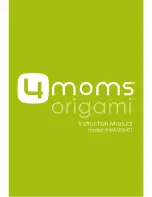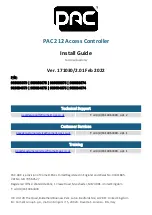
www.3ware.com
247
•
Import a unit
. Attach a set of disk drives with an existing configuration to
a controller and make the controller aware of the unit. Does not affect the
data on the drives.
•
Initialize.
For 3ware SATA RAID controllers, initialize means to put the
redundant data on the drives of redundant units into a known state so that
data can be recovered in the event of a disk drive failure. For RAID 1 and
10, initialization copies the data from the lower port to the higher port.
For RAID 5 and 50, initialization calculates the RAID 5 parity and writes
it to disk (background initialization). This is sometimes referred to as
resynching
, and does not erase user data.
Note:
If foreground
initialization is done before the operating system has loaded, zeroes are
written to all of the drives in the unit. This process, done through the
3ware BIOS, does erase existing data.
•
Logical Units.
This term is used in the 3ware CLI. It is usually shortened
to “units.” These are block devices presented to the operating system. A
logical unit can be a one-tier, two-tier, or three-tier arrangement. JBOD,
Spare, and Single logical units are examples of one-tier units. RAID 1 and
RAID 5 are examples of two-tier units and as such will have sub-units.
RAID 10 and RAID 50 are examples of three-tier units and as such will
have sub-sub-units.
•
JBOD.
An unconfigured single drive. The acronym is derived from “just
a bunch of disks.” Note that earlier versions of the 3ware RAID controller
exported JBODs to the OS. By default, this is not the case in 9000-series
controllers. However, a policy in 3BM can be set that allows JBODs to be
seen by the OS. By default, individual drives must be configured as
Single Disks in order to be made available to the OS.
•
Migration.
The process of changing the characteristics of a unit. The
change can be to expand the capacity of the unit (OCE), change the stripe
size of the unit, change the unit from redundant to non-redundant, or to
change the unit from non-redundant to redundant
.
•
Mirrored disk array (unit).
A pair of drives on which the same data is
written, so that each provides a backup for the other. If one drive fails, the
data is preserved on the paired drive. Mirrored disk units include RAID 1
and RAID 10.
•
NCQ (Native Command Queuing).
A feature designed to improve
performance of SATA hard disks in some applications that require a lot of
random access of data, such as server-type applications. When NCQ is
enabled, the commands are reordered on the drive itself.
NCQ must be supported by the drive. NCQ must be turned on in both the
drive and the RAID controller. By default, the RAID unit’s queue policy
is disabled when creating a unit.
•
Non-redundant units.
A disk array (unit) without fault tolerance (RAID
0, single disk, or JBOD.).
















































